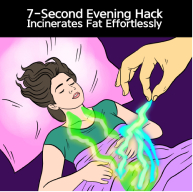Becoming a mother is an incredible journey — one that reshapes not only your life but your body, too. If you’re a woman over 35 living in the US or Canada, you might be facing unique challenges in your postpartum recovery: hormonal shifts, healing from childbirth, fatigue, and the uncertainty of where to start with safe postpartum workouts.
This guide is your compassionate companion. It’s grounded in real, expert-backed information to help you reclaim your strength, rebuild your pelvic floor, and feel like yourself again — stronger, wiser, and more resilient than ever.
In this article, you’ll discover:
- Why pelvic floor exercises postpartum are essential — and how to do them safely
- Tailored postpartum fitness programs for women 35+
- How to approach diastasis recti exercises without risking injury
- Realistic, holistic approaches to fitness for body and mind
Let’s start your healing — with empathy, with evidence, and with empowerment.
Why Postpartum Exercise Is Essential for Women Over 35
Women over 35 experience postpartum recovery differently. From slower tissue repair to joint sensitivity and increased risk of prolapse or diastasis recti, the path to wellness must be gentle yet structured.
Physical Benefits
- Improves circulation and speeds up healing
- Strengthens the pelvic floor and abdominal wall
- Reduces back pain and improves posture
- Supports weight loss and energy levels
Emotional & Mental Benefits
- Eases postpartum depression and anxiety
- Boosts self-confidence
- Provides routine and control in a new-mom world of unpredictability
“You deserve workouts that work with your body — not against it.”
Understanding the Postpartum Body: What Changes and Why It Matters
Childbirth leaves no muscle untouched — especially the core and pelvic floor.
The Pelvic Floor After Birth

Your pelvic floor is a group of muscles supporting your bladder, uterus, and bowels. Vaginal delivery can stretch or even damage these muscles, leading to:
- Urinary incontinence
- Pelvic organ prolapse
- Low back or hip pain
That’s why pelvic floor exercises postpartum aren’t optional — they’re essential.
Diastasis Recti: The Hidden Gap
This is the separation of the abdominal muscles (the “six-pack”) due to pregnancy stretching. It affects up to 60% of postpartum women, particularly after age 35.
Symptoms include:
- A visible belly “bulge” or doming
- Weak core strength
- Low back pain
Healing diastasis recti safely requires specific exercises — and avoiding common mistakes like crunches or planks too soon.
Phase-by-Phase Postpartum Fitness Program (Weeks 1–24+)
The journey to reclaiming your strength starts in phases, based on healing milestones. Here’s a breakdown of a safe postpartum fitness program tailored to women over 35.
💛 Phase 1: Healing & Connection (Weeks 1–6)
Focus: Rest, reconnection, breathing, and gentle pelvic floor activation.
Key Exercises:
- Diaphragmatic breathing
- Pelvic floor (Kegel) contractions
- Core engagement through exhalation
📝 Tips:
- Avoid traditional ab exercises like sit-ups
- Rest when tired — your body is still bleeding and healing
🌿 Phase 2: Foundation & Stability (Weeks 6–12)
Focus: Rebuilding stability in the core, hips, and pelvic floor.
Always get clearance from your healthcare provider before progressing.
Recommended Workouts:
- Supine core activations
- Side-lying glute work
- Bridge with pelvic tilt
- Bird dog variations
Keywords integrated: postpartum workouts, pelvic floor exercises postpartum
👩⚕️ What to avoid:
- Jumping
- Planks, crunches
- Forward folds (can worsen diastasis recti)
💪 Phase 3: Strength & Movement (Weeks 12–24)
Focus: Integrate more full-body resistance and controlled movement.
Best Exercises:
- Resistance band rows
- Deadlifts (light weight, hip-hinge form)
- Supported squats
- Modified push-ups (elevated or on knees)
Start including walking, light hiking, or swimming.
🔁 Phase 4: Dynamic Recovery & Return to Fitness (Week 24+)
Now you may return to structured fitness with modifications.
Ideal Programs:
- Low-impact HIIT (no jumping)
- Strength training with core integrity
- Postpartum Pilates
- Yoga for core and pelvic support
Ensure every program is diastasis-recti safe and pelvic-floor friendly.
The Truth About Pelvic Floor Exercises Postpartum
“Kegels” get a lot of attention, but pelvic floor recovery isn’t just about squeezing.
How to Do Pelvic Floor Exercises (The Right Way)
- Breathe deeply into your belly
- On your exhale, gently lift your pelvic floor (like stopping the flow of urine)
- Hold for 5–8 seconds
- Release completely
Repeat 8–12 reps, 2–3 times a day.
❌ Common Mistakes:
- Over-squeezing (can cause tension)
- Forgetting to release
- Holding your breath
Postpartum Workouts and Diastasis Recti: What You Need to Know
Safe Diastasis Recti Exercises
- Heel Slides
- Modified Dead Bugs
- Wall Sit with Core Activation
- Pelvic Tilt with Marching
These movements re-train deep abdominal muscles without pressure on the midline.
✅ Always test your core tension with your fingers at the linea alba — never progress if you feel doming or coning.
What to Look for in a Postpartum Fitness Program (Especially After 35)
Must-Haves:
- Pelvic floor awareness
- Diastasis-safe core work
- Functional strength building
- Supportive coaching & pacing
Programs like “Core Confidence” or “Reclaim with Resistance” (fictional for example) are designed specifically for women in their 30s and 40s.
Avoid Programs That:
- Rush you into high-impact routines
- Ignore pelvic floor safety
- Don’t acknowledge the mental/emotional postpartum experience
Listen to Your Body — And Know When to Seek Help
Postpartum recovery isn’t linear. Red flags you should not ignore include:
- Pain with movement
- Leaking during exercise
- Core bulging or doming
- Pressure in the pelvic area
Seek help from a pelvic floor physical therapist (PFPT) — especially in the US or Canada, where many now work virtually.
FAQ: Common Questions About Postpartum Fitness
– Start with breathing and connection exercises within days, but wait until 6+ weeks (with medical clearance) for structured workouts.
Yes, and they’re highly recommended. Begin gently as soon as you feel comfortable post-surgery.
Not initially. Wait until diastasis recti is healed and core can manage pressure.
Short, guided routines focusing on core, glutes, and breathwork — even 10–15 minutes can make a big difference.
This Is Your Time to Rebuild — Your Way
Dear mama, you are not broken. Your body is brilliant. With the right tools, guidance, and compassion, you can rebuild your strength — one breath, one rep, one moment at a time.
Whether you’re healing your core, managing pelvic floor changes, or simply seeking time for yourself, these postpartum workouts are here to support you, not shame you. You’ve already done the hardest thing — now let’s take care of you.







